As we invest in our homes, one of the most essential things we buy is furniture. Furniture complements the interior and creates the ambiance we desire. However, it’s not just enough to buy high-quality furniture. Keeping it looking new and beautiful is an ongoing job. Without the proper maintenance, furniture can quickly become damaged, dull, and lose its luster. But what is the secret to maintaining furniture? Furniture polish is the answer! In this article, we will explore the benefits of using furniture polish, different types available, the proper way to use it, common mistakes to avoid, and DIY furniture polish. So, let’s get started on a journey to make your furniture shine.
Why Use Furniture Polish?
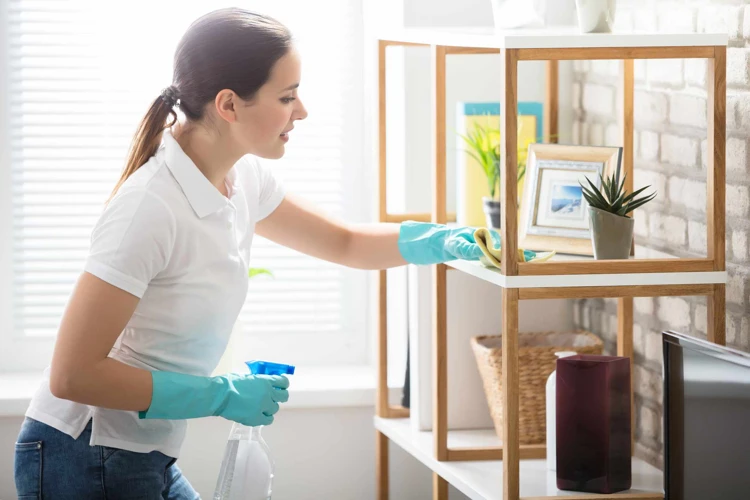
Keeping your furniture in good condition is important for a number of reasons. Not only does maintaining your furniture help to maintain its aesthetic appeal, but it can also extend the life of your furniture. One way to maintain your furniture and give it some extra shine is by regularly applying furniture polish. But why use furniture polish, and how does it benefit your furniture? In this section, we’ll explore the benefits of using furniture polish, as well as some of the differences between furniture polish and other products. Want to know the science behind the shine of furniture polish and its chemical properties? Check out our related article.
The Benefits of Furniture Polish
One of the main benefits of using furniture polish is that it can help to protect and prolong the life of your furniture by adding a layer of protection to the surface (Source: Polish vs. Wax: Enhance Shine and Resilience). This can help to prevent scratches, scuffs, and other types of damage that can occur over time. Additionally, furniture polish can help to enhance the appearance of your furniture by restoring its natural shine and luster (Source: DIY Polish Recipes: Eco-friendly, Budget-friendly).
Another benefit of furniture polish is that it can help to repel dust and other particles from settling on the surface of your furniture (Source: Wooden Surface Polish Tips). This can help to keep your furniture looking clean and fresh for longer periods of time, which can save you time and money in the long run. Additionally, furniture polish can help to add moisture to the surface of your furniture, which can help to prevent cracking and drying out (Source: Polish vs. Wax: Enhance Shine and Resilience).
Using furniture polish is an effective way to protect and enhance the appearance of your furniture while also helping to extend its lifespan. However, it is important to choose the right type of polish and use it properly to avoid causing damage to your furniture.
Furniture Polish vs. Other Products
When it comes to cleaning and maintaining furniture, there are a variety of products available on the market that claim to be effective. However, furniture polish has distinct advantages over other products.
One of the main benefits of using furniture polish is that it helps to protect your furniture from moisture and scratches. It creates a barrier between the wood or other material and the outside environment, helping to prevent damage. Other cleaning products, such as water or soap, can actually damage the finish on your furniture, leading to unsightly stains and scratches.
Another advantage of furniture polish is that it restores the shine and beauty of your furniture. Over time, wooden furniture can become dull and lackluster. By using furniture polish, you can bring back the natural luster and shine of your furniture, making it look like new again.
In comparison to other cleaning products, such as vinegar or soap, furniture polish also has a pleasant scent. This makes it a more enjoyable experience to clean your furniture, as opposed to using a product with an unpleasant odor.
It’s worth noting that while some may argue that using simple DIY solutions like vinegar or lemon juice can be just as effective as furniture polish, these solutions can actually damage certain types of furniture finishes, such as lacquer or shellac.
While there are a variety of cleaning products available on the market, furniture polish stands out as a reliable and effective way to protect and enhance the appearance of your furniture.
Types of Furniture Polish
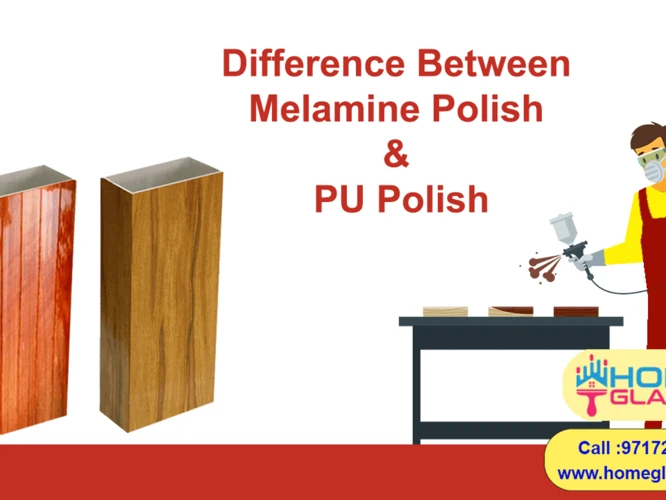
When it comes to choosing the right furniture polish, there are many options available on the market, which can make the decision overwhelming. It’s essential to understand the various types and formats of furniture polish available to determine which one will work best for your needs. From sprays to liquids and pastes, and natural versus synthetic, the choices can be perplexing. Additionally, with so many options to consider, selecting the wrong kind of furniture polish can end up causing damage to your furniture. It’s crucial to take the time to understand the differences between each type of furniture polish, so you make the right choice for your furniture.
Spray, Liquid, or Paste?
When it comes to furniture polish, there are different types to choose from. These include sprays, liquids, and pastes. Each type has its own set of advantages and disadvantages that you need to consider before deciding which one to use.
Here are the pros and cons of each type of polish:
- Spray: Furniture sprays are convenient and easy to use. They are ideal for large surfaces and hard-to-reach areas. However, sprays tend to leave streaks and require more effort to buff off. Plus, their aerosol containers can harm the environment.
- Liquid: Liquids are versatile and can be used on different types of furniture. They come in a range of scents and can provide a high gloss finish. However, they tend to evaporate quickly, which can make it more challenging to use. Also, the application process can be messy as it drips and spills easily.
- Paste: Furniture paste is the most traditional option among the three. It is easy to control and use, making it ideal for antique and delicate furniture. It has a long-lasting shine and provides excellent protection. The downside, however, is that it requires more time and elbow grease to apply and buff off
So, which type of polish should you choose? It ultimately depends on your personal preference and the type of furniture you have. If you need to polish a large surface quickly, spray furniture polish is your best bet. Liquids are ideal for routine cleaning and spot polishing, while paste polish is best for antique or delicate furniture.
Natural vs. Synthetic Furniture Polish
When it comes to choosing furniture polish, there are two main types to consider: natural and synthetic. Each type has its own benefits and drawbacks, so it’s important to understand what you’re buying before making a purchase.
Natural furniture polish is typically made from beeswax and natural oils, such as jojoba or walnut oil. These ingredients are often sourced from sustainable and eco-friendly sources, making it a good choice for those who prioritize environmental sustainability. Natural polish can provide a more authentic look to antique or vintage furniture.
However, natural polish can be more expensive than synthetic options, and it may not provide the same level of protection against scratches and other damage. It can also require more frequent application than synthetic polish to maintain its protective properties.
On the other hand, synthetic furniture polish is often made from petroleum-based ingredients and other synthetic chemicals. It’s typically less expensive than natural polish and provides a higher level of protection against scratches and other damage. It also tends to last longer and requires less frequent application.
However, synthetic polish can emit strong odors and may contain harmful chemicals that can be detrimental to both human health and the environment. It may also leave a sticky or greasy residue on furniture, which can be difficult to remove.
To assist in making a decision between natural and synthetic furniture polish, it is possible to refer to a comparison table, summarizing the main advantages and disadvantages of each type:
| Natural Furniture Polish | Synthetic Furniture Polish | |
|---|---|---|
| Composition | Beeswax and natural oils | Petroleum-based ingredients and synthetic chemicals |
| Environmental Sustainability | Often sourced from sustainable and eco-friendly sources | May contain harmful chemicals |
| Cost | More expensive | Less expensive |
| Authentic Look | Provides a more authentic look to antique or vintage furniture | May not provide the same level of authenticity |
| Protective Properties | May require more frequent application | Provides a higher level of protection against scratches and other damage |
| Odor | Natural scent | May emit strong odors |
Ultimately, the choice between natural and synthetic furniture polish comes down to personal preference and priorities. For those who prioritize environmental sustainability and authenticity, natural polish is likely the better option. However, for those who prioritize cost and effectiveness over environmental concerns, synthetic polish may be the better choice.
How to Choose the Right Furniture Polish
Choosing the right furniture polish is important to ensure that your furniture is well-maintained and protected. With so many options available on the market, it can be confusing to make the right choice. However, by understanding a few key factors, you can easily choose the right furniture polish for your needs.
Type of furniture: The first thing to consider when choosing a furniture polish is the type of furniture you have. Different types of furniture require different types of polish. For example, a wood furniture polish may not be suitable for use on leather furniture, and vice versa. Before purchasing a polish, check the label to ensure that it is suitable for use on your specific type of furniture.
Type of finish: The type of finish on your furniture will also play a role in choosing the right polish. For example, if you have a glossy finish, you’ll want a polish that enhances shine, while a matte finish may require a different type of polish. Again, check the label to ensure that the polish you choose is appropriate for the finish of your furniture.
Natural vs. synthetic: When it comes to furniture polish, you’ll have the option of choosing natural or synthetic products. Natural options, such as beeswax or olive oil, may be more eco-friendly, but may not offer as much protection as synthetic options. On the other hand, synthetic polishes may have chemicals that can be harmful to the environment, but can provide longer-lasting protection.
Hypoallergenic options: If you or someone in your home has allergies, it is important to consider hypoallergenic options when choosing a furniture polish. These polishes are designed to be gentle on the skin and reduce the risk of allergic reactions.
Brand reputation: Finally, consider the reputation of the brand when choosing a furniture polish. Look for brands that are well-known for producing high-quality polishes that are effective and safe to use. Be wary of brands that promise quick fixes or miracle results, as these may not always be reliable.
By considering these factors, you can easily choose the right furniture polish for your needs and protect your furniture for years to come.
When to Polish Your Furniture
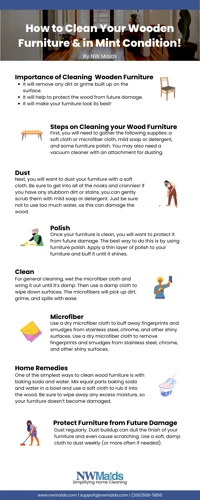
It can be uncertain for many people when the best time is to polish their furniture. Some individuals may assume that they only need to polish their furniture when it looks dull or has visible imperfections. However, this approach may lead to inconsistencies in the appearance of furniture.
It is recommended to polish your furniture every 3-6 months, depending on the type of wood, finish, and level of usage. Furniture polishing should be seen as a routine maintenance task instead of a reactive measure to address specific issues.
If a piece of furniture is frequently used or placed in an area prone to dirt, dust, or sun exposure, it may require more frequent polishing. On the other hand, pieces that are scarcely used and live in a protected environment may not require as much attention.
The changing of seasons is also an excellent moment to consider polishing your furniture. Extreme weather conditions can damage or negatively affect the appearance of furniture, so it is crucial to take preventative measures like regular polishing to help mitigate these effects.
After cleaning any stains or spots, furniture needs to be rested so that the moisture, applied during cleaning, can dry up completely. This process may take several hours or overnight, depending on the extent of the cleaning issue. Polishing furniture right after cleaning may lead to subsequently undesirable consequences.
It is essential to polish your furniture regularly, about every 3-6 months, or more often if needed, regarding the level of usage and environmental factors. Planning to polish furniture during seasonal changes and allowing enough time before polishing after cleaning is crucial to maintain the furniture’s longevity and appearance.
How to Polish Your Furniture
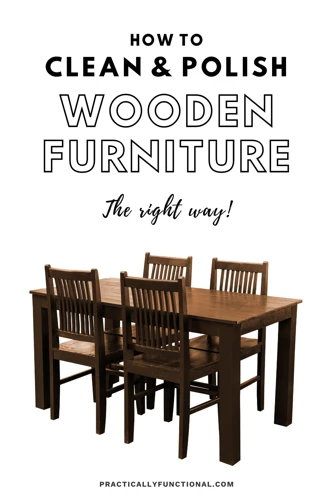
Are you tired of dull and worn furniture, but hesitant to spend a fortune on replacements? Regularly polishing your furniture may be the solution you’re looking for. With just a little effort and the right tools, you can bring your furniture back to life and extend its lifespan. Here’s a step-by-step guide on how to polish your furniture effectively and keep it looking shiny and new.
Step-by-Step Furniture Polishing Guide
Furniture polishing is an important step in keeping your furniture looking great for years to come. Here is a step-by-step guide to help you polish your furniture properly.
- Clean the furniture: Before applying polish, make sure that the furniture is clean and dry. Use a soft cloth to wipe away any dust or dirt.
- Choose the right polish: There are many different types of furniture polish available, so it’s important to choose the one that’s right for your furniture. Read the label to ensure that the polish is safe for the type of wood or surface that you have.
- Apply the polish: Apply a small amount of polish to a soft cloth or a polishing pad. It’s important not to use too much polish, as this can leave a greasy residue. Use a circular motion to apply the polish, working in small sections of the furniture at a time.
- Buff the furniture: Once the polish has been applied, use a clean and dry cloth to buff the furniture. This will help to remove any excess polish and bring out the shine in the wood.
- Repeat if necessary: If you find that the furniture still doesn’t have the shine that you’re looking for, repeat the process again. Be sure to let the furniture dry completely before applying more polish.
By following these steps, you will be able to polish your furniture effectively and efficiently, leaving it looking clean and shiny. Remember to choose the right polish for your furniture, and apply it in small sections at a time. Don’t forget to buff the furniture after applying the polish, and repeat the process if necessary.
How Often to Polish Your Furniture
When to polish your furniture depends on different factors such as its location, usage, and exposure to dust and sunlight. Here are some tips for determining how often to polish your furniture:
- For frequently used furniture, polish it at least once a month to maintain its shine and protect it from wear and tear.
- If the furniture is located in a high-traffic area of your home or office, it might need more frequent polishing.
- Furniture near windows, doors, or heat sources may require more frequent polishing as they are more prone to exposure to sunlight, dust, and heat.
- If your furniture has a high gloss finish, it might require less frequent polishing because the shine will last longer.
It’s important to note that over-polishing can damage your furniture, so keep the frequency reasonable and consistent. With regular polishing, you can keep your furniture looking beautiful and extend its life.
Mistakes to Avoid When Polishing Furniture

While furniture polishing is an important part of furniture maintenance, it’s important to be aware of the common mistakes people make when polishing their furniture. Unfortunately, many people make these mistakes without even realizing it, which can lead to damage and a less-than-perfect finish. In this section, we’ll go over the mistakes to avoid when polishing your furniture, so you can keep your furniture looking its best for years to come.
Mistake #1: Using Too Much Polish
Using too much furniture polish can actually cause more harm than good. While it’s tempting to apply a generous amount of polish to your furniture, doing so can lead to a buildup of residue that is difficult to remove. Here are some mistakes to avoid when it comes to using furniture polish:
- Not following the instructions: Before applying furniture polish, be sure to read the instructions on the label carefully. Different types of polish may require different amounts to be applied or a specific amount of time to be left on before wiping off.
- Using too much at once: Using an excessive amount of polish can actually attract more dust and dirt, leading to a buildup of grime on the furniture.
- Not buffing the furniture: After applying furniture polish, be sure to buff the furniture with a clean, dry cloth to remove any excess polish and to give the furniture a clean, glossy finish.
- Not allowing the polish to dry: Giving the furniture polish enough time to dry properly is essential. If you wipe the furniture before the polish has dried, it can smear and create unsightly streaks.
To prevent using too much polish, always follow the instructions on the label and use a minimal amount of product. Remember, less is more when it comes to using polish on your furniture!
Mistake #2: Using the Wrong Type of Polish
One of the biggest mistakes people make when polishing their furniture is using the wrong type of polish. There are various types of furniture polish available in the market, and each has its own unique properties that cater to specific furniture materials. It is important to use the right type of polish to ensure that your furniture is well-maintained and protected from damage.
For instance, using wax-based polish on lacquer furniture can result in a sticky, cloudy finish. On the other hand, silicone-based polish on natural wood furniture can damage the finish and create a greasy buildup.
To help you avoid this mistake, here is a table that shows the types of polish that are suitable for different furniture materials:
| Furniture Material | Recommended Polish Type |
|---|---|
| Leather | Oil-based or wax-based polish |
| Wood | Silicone-free, oil-based, or wax-based polish |
| Lacquer | Water-based or lacquer-specific polish |
| Metal | Metal-specific polish |
| Plastic | Water-based or plastic-specific polish |
Using the right type of polish is essential to protect your furniture and keep it looking its best for years to come. So, before you start polishing your furniture, make sure to check its material and choose the appropriate type of polish.
Mistake #3: Not Dusting Before Polishing
One common mistake people make when polishing their furniture is not dusting it beforehand. Dusting is important because it removes any loose dirt and debris on the surface of the furniture, which can scratch the surface if they are not removed before polishing. It is especially important if you are using a spray or liquid polish, as the dust can mix with the polish and create a grime that is difficult to remove.
To avoid this mistake, make sure to dust your furniture thoroughly before applying any type of polish. This can be done using a soft, lint-free cloth or a feather duster. If there is a lot of dust buildup, you may want to use a vacuum cleaner with a soft brush attachment to remove it.
It’s also important to avoid using any type of water or wet cloth to dust the furniture before polishing. This can leave watermarks and cause damage to the finish. Instead, use a dry cloth or duster.
In addition, make sure to pay special attention to areas where dust tends to accumulate, such as corners, crevices, and grooves. These areas may require extra attention and a bit more elbow grease to ensure that they are completely dust-free before you start polishing.
By taking the time to dust your furniture before polishing, you can help ensure that your furniture stays clean and free from scratches and damage, prolonging its life and beauty for years to come.
| Common Mistake: | Not dusting furniture before polishing |
|---|---|
| Why it’s a mistake: | Lack of dusting can result in scratches and damage to the surface of the furniture that could have been prevented |
| How to avoid it: | Dust furniture thoroughly with a soft, lint-free cloth or feather duster before polishing. Avoid using water or wet cloth to dust furniture, especially if using a spray or liquid polish. Pay special attention to corners, crevices, and grooves where dust accumulates. |
DIY Furniture Polish
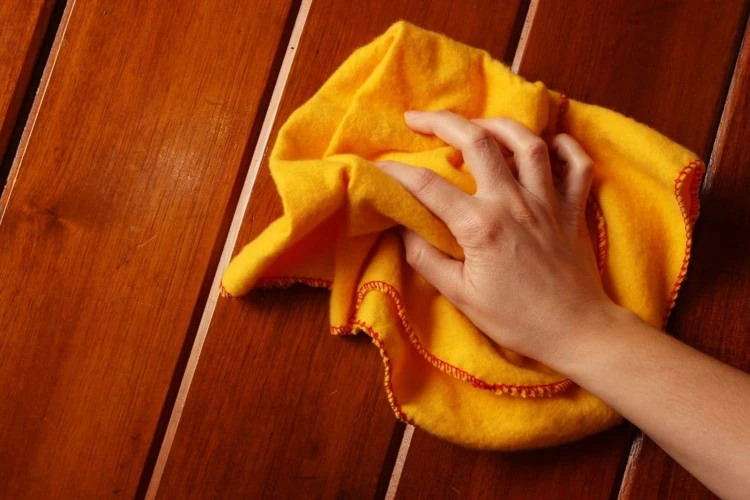
Making your own furniture polish can be a great way to save money and create a product tailored to your specific needs. There are many DIY furniture polish recipes available, using natural ingredients that offer the same benefits as store-bought products.
DIY Natural Furniture Polish Recipe
One simple recipe for a natural furniture polish involves mixing equal parts white vinegar and olive oil. The vinegar helps to lift dirt and grime while the oil nourishes and protects the wood. To make this DIY polish, follow these steps:
1. Mix equal parts of white vinegar and olive oil in a small bowl.
2. Dip a microfiber cloth into the mixture and wring it out well.
3. Rub the cloth onto your wooden furniture in circular motions.
4. Once you have covered the entire surface, use a clean cloth to buff away any excess polish.
DIY Beeswax Furniture Polish Recipe
If you prefer a thicker, paste-like polish, you can make your own beeswax furniture polish using the following recipe:
1. Melt 1 cup of grated beeswax in a double boiler.
2. Once the beeswax has melted, add in 1 cup of olive oil and stir until the mixture is smooth.
3. Remove the mixture from heat and allow it to cool slightly.
4. Pour the mixture into a glass jar and let it cool completely.
5. To use, scoop a small amount of the polish onto a microfiber cloth and rub it onto your furniture in circular motions. Buff away any excess polish with a clean cloth.
Benefits of DIY Furniture Polish
Making your own furniture polish is not only cost-effective, but it also allows you to control the ingredients and tailor the polish to your needs. DIY natural furniture polishes are typically made using non-toxic ingredients, which is better for both the environment and your health. Additionally, many of these natural ingredients can help to nourish and protect the wood, making it look better over time.
Caution
It is important to note that some DIY furniture polish recipes may not be suitable for certain types of wood or furniture finishes. Always test the polish on a small, inconspicuous spot before using it on the entire piece of furniture. Also, be mindful of any allergies you or others in your household may have to certain ingredients.
How to Maintain Your Furniture After Polishing
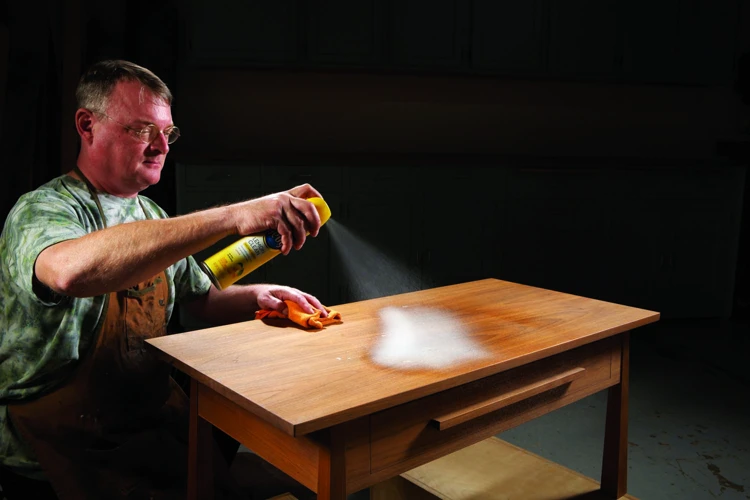
Congratulations! You have just polished your furniture and it looks stunning. But the work does not stop there. To ensure that your furniture continues to look as good as new, you need to maintain it properly. Maintenance goes beyond just keeping your furniture clean; it involves protecting it from further damage. In this next section, we will discuss some essential tips on how to maintain your furniture after polishing. So, grab your polish and let’s get started.
Protecting Your Furniture from Sun and Heat Damage
Furniture can easily get damaged by the sun and heat if not taken care of properly. Here are some ways to protect your furniture from sun and heat damage:
- Position your furniture properly: Avoid placing your furniture in areas where they are exposed to direct sunlight or close to heat sources such as radiators, fireplaces, or heating vents. Direct sunlight can cause fading and discoloration while heat can cause cracking and warping of wood.
- Use window treatments: Use blinds, curtains or shades to limit the amount of sun that enters into your home. This can also help regulate the temperature of your home, reducing the need for excessive air conditioning.
- Apply UV protection: Apply a UV protection film on windows or install window tinting to filter out the harmful UV rays of the sun. This will not only protect your furniture but also you and your family from skin damage.
- Use coasters and mats: Use coasters and mats to protect wood and other surfaces from heat damage caused by hot plates, cups or dishes.
- Clean up spills immediately: Clean up any spills immediately to avoid water damage and stains. Prolonged exposure to moisture can cause wood to warp and swell.
Taking these precautions can help protect your furniture from sun and heat damage, prolonging its lifespan and keeping it looking beautiful for years to come.
Other Tips for Furniture Maintenance
Maintaining your furniture doesn’t stop at regular polishing. Here are some additional tips to ensure your furniture lasts for years to come:
- Keep it away from direct sunlight: Sunlight can cause your furniture to fade, dry out, and even crack. To prevent this, keep your furniture out of direct sunlight, or use curtains or blinds to block the sun’s rays.
- Keep it away from heat sources: Heat sources like radiators, fireplaces, and heaters can also cause your furniture to dry out and crack. Make sure your furniture is kept away from heat sources or consider using a humidifier to keep the air around your furniture moist.
- Use coasters and placemats: Water and heat can cause noticeable damage on wooden tables, especially if they are not protected. Make sure to use coasters under glasses and placemats for hot dishes, which can protect your table from watermarks and heat damage.
- Don’t drag your furniture: Always lift your furniture instead of dragging it, which can cause unnecessary wear and tear on the legs and bottom of the piece.
- Clean up spills immediately: Accidents happen, and spills on furniture are no exception. It is important to clean up any spills immediately to prevent them from seeping into the wood, which can cause serious damage.
- Use furniture covers: If you have upholstered furniture, it’s a good idea to use furniture covers to protect it from dust, stains, and general wear and tear.
- Be careful when moving furniture: Moving furniture can be a hassle, but it’s important to do it carefully to avoid damage. Always protect your furniture by wrapping it in moving blankets or bubble wrap, and use furniture dollies or sliders to move it around.
By following these additional tips for furniture maintenance, you can help protect your furniture from damage and extend its lifespan.
The Bottom Line
Regular furniture polishing is essential to protect your furniture and keep it looking beautiful for years to come. Using a high-quality furniture polish has numerous benefits, including enhancing the shine and luster of your furniture, protecting it from scratches and stains, and extending its lifespan.
When choosing a furniture polish, consider the type that best suits your furniture’s needs. While spray polishes are convenient and easy to use, paste polishes may provide more thorough coverage for older or heavily damaged furniture. Additionally, natural furniture polishes made from beeswax and other organic ingredients may be a better option for environmentally conscious consumers.
Knowing when to polish your furniture is also important. Generally, it’s a good idea to polish your furniture every 2-3 months, or more frequently if it’s in high traffic areas or exposed to frequent use. When it’s time to polish, be sure to clean your furniture first to avoid trapping dirt or dust underneath the polish.
To properly polish your furniture, follow a step-by-step guide to achieve the best results. Avoid common mistakes such as using too much polish, using the wrong type of polish, or forgetting to dust before polishing.
In addition to regular polishing, there are other steps that you can take to maintain your furniture’s beauty and extend its life. Protecting it from sun and heat damage is critical, so try to avoid placing your furniture in direct sunlight or near heat sources. Utilizing furniture coasters, tablecloths, and other protective items can also reduce wear and tear on your furniture.
By following a regular polishing routine and taking other measures to maintain your furniture, you can enjoy its beauty and durability for many years. Investing in high-quality furniture polish and making sure to use it appropriately is a simple and effective way to protect your furniture and keep it looking its best.
Conclusion
In conclusion, regular furniture polishing is an essential step in maintaining the durability and beauty of your furniture. Applying furniture polish protects your furniture from damage due to moisture, heat, and regular wear and tear over time.
However, it is important to choose the right type of furniture polish for your specific furniture material, and to avoid common mistakes like using too much or the wrong type of polish. Be sure to dust your furniture before applying the polish and follow the proper steps, including testing a small area first and using a soft, lint-free cloth.
There are different options for types of furniture polish including spray, liquid, or paste, and natural or synthetic options. It is important to do your research and choose the right type for your specific furniture type and needs.
Don’t forget that furniture maintenance does not end after polishing. Regular upkeep, including keeping your furniture out of direct sunlight and away from heat sources, can extend the lifespan of your furniture.
Overall, regular furniture polishing is a simple but effective way to protect your furniture and keep it looking its best for years to come. By taking the necessary precautions and following the proper steps, you can ensure that your furniture remains a valuable investment that will look great for years to come.
Frequently Asked Questions
What are the benefits of furniture polish?
Furniture polish helps protect and preserve the surface of your furniture. It can also add shine and improve its appearance.
How often should I polish my furniture?
It depends on how often you use the furniture and the type of polish you’re using. Generally, once every one to three months is recommended.
Can I use furniture polish on all types of furniture?
No, some types of furniture may require specific types of polish or may not be suitable for polish at all. Check the manufacturer’s recommendations or consult with a furniture specialist.
What’s the difference between spray, liquid, and paste furniture polish?
Each type of furniture polish has a different texture and application method. Spray is typically the most convenient and easiest to apply, while paste requires more time and effort but may provide better results.
Can I make my own furniture polish?
Yes, there are many DIY furniture polish recipes that you can try. These often use natural ingredients like lemon juice and olive oil.
What mistakes should I avoid when polishing my furniture?
Avoid using too much polish, using the wrong type of polish, and not dusting the furniture first. These mistakes can cause damage or reduce the effectiveness of the polish.
Does furniture polish protect against sun damage?
Some types of furniture polish contain UV protectants that can help protect against fading and damage from the sun’s rays. Read the label to see if the polish you’re using offers this protection.
Can I use furniture polish on outdoor furniture?
No, furniture polish is not suitable for outdoor furniture as it can attract dust and dirt, and may break down more quickly in exposure to the elements.
What can I do to maintain my furniture after polishing?
Avoid placing hot or damp objects directly on the furniture, and use coasters or placemats under glasses and dishes. Dust regularly and avoid exposing the furniture to direct sunlight as much as possible.
Is natural furniture polish better than synthetic?
It depends on your preferences and the specific product you’re using. Natural furniture polish may be better for those who prefer to use eco-friendly products, while synthetic polish may be more effective for solving specific issues like scratches or water rings.
